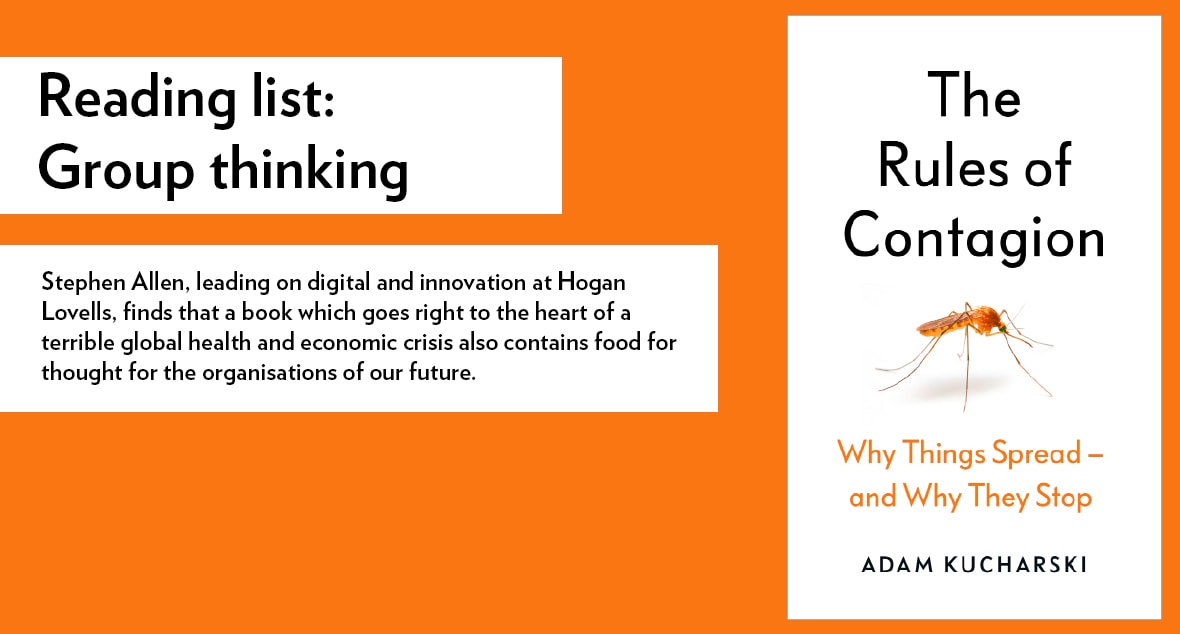Group thinking
Stephen Allen, leading on digital and innovation at Hogan Lovells, finds that a book which goes right to the heart of a terrible global health and economic crisis also contains food for thought for the organisations of our future.
I tend to buy books in batches of five or 10 and become twitchy when I get down to less than two in the stack. Accordingly, I had bought Adam Kucharski’s The Rules of Contagion before the full implications of Covid-19 were understood. It has, as you’d expect, proved a timely read.
Kucharski, a mathematician by training, eschewed an anticipated career as a ‘quant’ at an investment bank to become an epidemiologist. Now he is an associate professor at the London School of Hygiene & Tropical Medicine, and uses mathematical models to predict the potential spread of disease.
An epidemic has four main stages: spark, growth, peak and decline. However, badly managed epidemics can see these stages repeat. It is therefore necessary to look at how disease is transmitted. Epidemiologists group populations into three categories: the ‘susceptible’, the ‘infectious’ and the ‘recovered’ (known as the SIR model). Commonly, once someone is recovered, they’re deemed to be immune – and the recovered can be those who have been infected and are now disease-free, or who have been immunised. To slow the spread of an epidemic, a reasonable proportion of the population need to be recovered and those who are infected need to be quarantined. This is the premise of the ‘herd immunity’we have heard so much about – however, this only works if those who have recovered are immune from reinfection.
But apart from being an unashamed geek, and having an insatiable love of books, why on earth did I want to read this one? Because, like so many scientific models, these can be applied to so many other areas. Kucharski applies the models of ‘contagion’ to a host of everyday challenges, such as financial market contagion (yes, that includes post-Lehman in 2008, but also the South Sea Bubble); computer viruses; the spread and proliferation of fake news; sparking and growing innovation; and the proliferation of new ideas and cultural change. Applying spark, growth, peak and decline to each of these phenomena can help us better understand how to start or stop things spreading, to whom they are more or less likely to spread, and how quickly. For example, when it comes to organisational health and the process of trying to innovate to something better, the trio of susceptible, infectious and recovered could be replaced by groupings titled the ‘uninitiated’, the ‘informed’ and the ‘transformed’.
We live in an ever-more connected network – none of us ‘survive’ the impact or influence of our interactions with those we come into contact with or, by connection, anyone they are connected to either. Traditional ideas of ‘team’ or ‘group’ or ‘community’ don’t always apply – we are no longer discrete or disconnected from the wider world. And how we learn – for better or for worse – comes from a spark we may never know about. We are rarely immune. Better to understand, anticipate and work with it than unknowingly be susceptible.




